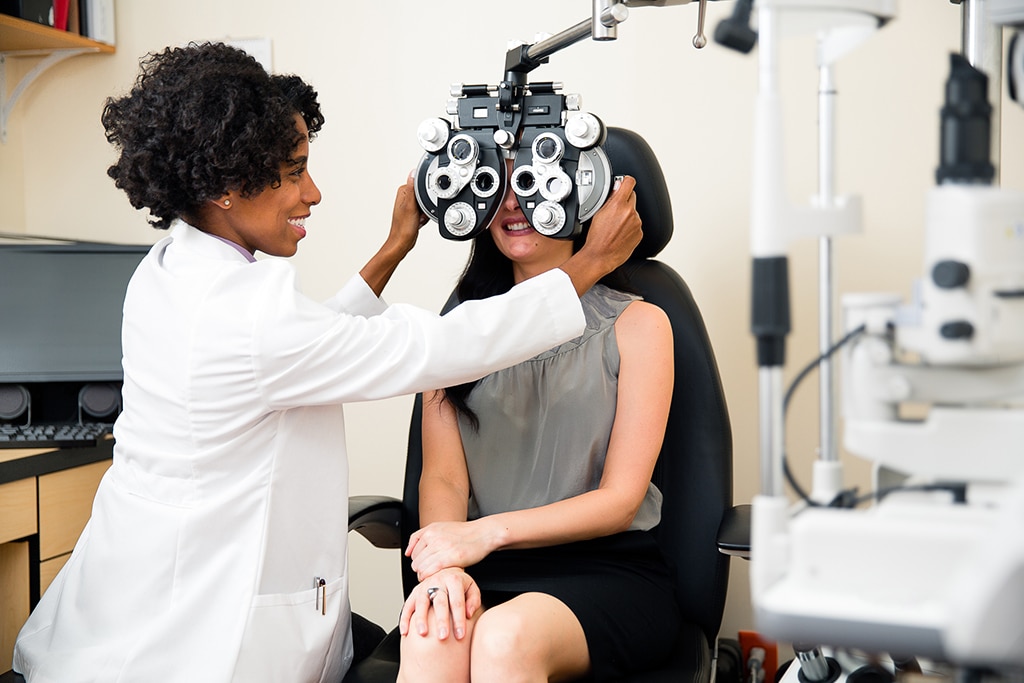Understanding the Role of Your Eye Doctor in Maintaining Vision
Wiki Article
Checking Out the current Technical Advancements in Optometry and What They Mean for Optometrists
From the accuracy of Optical Comprehensibility Tomography to the nuanced insights supplied by AI-driven analysis tools, these developments are setting brand-new requirements in individual analysis and therapy. As these improvements permeate the technique, optometrists are encountered with the obstacle of embracing these tools to enhance patient results.Technologies in Diagnostic Tools
Progressing the field of optometry, developments in diagnostic tools have revolutionized the way eye treatment specialists examine and identify eye problems and aesthetic problems. The previous years has actually seen substantial technical developments, making it possible for even more accurate and detailed assessments.One more trick advancement is the intro of innovative corneal topography systems, which map the surface area curvature of the cornea with precision. These tools are specifically helpful for fitting get in touch with lenses and diagnosing corneal problems. Additionally, electronic retinal imaging has transformed typical ophthalmoscopy, providing thorough, panoramic views of the retina that promote comprehensive aesthetic exams.
The advancement of wavefront aberrometry has actually additionally been vital, allowing the analysis of refractive errors with unparalleled precision (Eye Doctor Optometrist). This innovation assists in personalizing corrective lenses and boosting surgical outcomes for refractive surgeries. Jointly, these diagnostic improvements equip eye doctors to provide superior client care, guaranteeing early intervention and tailored treatment techniques, eventually enhancing visual wellness end results
AI in Person Management
Building on the foundation of innovative diagnostic devices, the unification of man-made knowledge (AI) in client management stands for a transformative leap for optometry. AI systems are significantly employed to boost effectiveness, precision, and customization in patient treatment.Moreover, AI-driven platforms promote streamlined person interactions and management processes. Automated organizing, virtual appointments, and personalized follow-up strategies not just improve individual contentment however additionally optimize time monitoring for specialists. These systems can triage people based on the urgency of their problems, guaranteeing that those in critical demand get prompt interest.
Furthermore, AI boosts decision-making by offering eye doctors with evidence-based recommendations and treatment paths. By integrating data from digital health documents, AI devices use understandings that notify clinical choices, minimizing the threat of mistakes and boosting patient outcomes. As AI remains to develop, its function in person monitoring will likely broaden, reshaping the landscape of optometric care.
Developments in Retinal Imaging
In the world of optometry, retinal imaging has actually observed exceptional technical advancements that are improving diagnostic capabilities and client treatment. Technologies such as Optical Comprehensibility Tomography (OCT) and fundus photography have transformed how eye doctors imagine and analyze the retina.Improved imaging modalities like OCT angiography are further refining analysis precision. This non-invasive method maps blood circulation in the retina, offering essential insights right into vascular wellness without the requirement for color shots. In addition, adaptive optics modern technology is being integrated right into retinal imaging systems to fix ocular aberrations, delivering extraordinary image clarity. Such improvements assist in the recognition of min retinal adjustments that could indicate illness progression.
Additionally, improvements in man-made knowledge are augmenting retinal imaging by allowing automated evaluation of large datasets. These systems aid optometrists in identifying patterns indicative of pathology, thus enhancing diagnostic accuracy and performance. Collectively, these advancements are changing retinal imaging right into a foundation of contemporary eye care, enhancing results and expanding restorative opportunities.
Teleoptometry's Growing Function
Teleoptometry is increasingly becoming a vital part of eye treatment, driven by developments in digital interaction and analysis tools. This is specifically beneficial in country and underserved areas where access to specialized eye treatment is typically limited.The assimilation of fabricated knowledge (AI) additional enhances teleoptometry, making it possible for the analysis of aesthetic data and assisting in the discovery of eye problems such as glaucoma and diabetic retinopathy. AI-powered algorithms can rapidly translate complex imaging data, giving optometrists with beneficial understandings that reinforce clinical decision-making.
In addition, teleoptometry supports connection of care via seamless assimilation with digital health and wellness documents (EHRs), this post allowing eye doctors to maintain comprehensive person histories. When seeking advice from with different professionals., this guarantees that individuals receive customized and regular care even.
Regardless of these advantages, challenges stay, consisting of making certain data safety and taking care of patient expectations. Teleoptometry stands for a significant stride towards more easily accessible, reliable, and patient-centered eye treatment. As technology develops, its function is poised to broaden better.

Future Fads in Eye Treatment
A myriad of ingenious trends is readied to improve the future of eye treatment, driven by technical innovations and the evolving requirements of clients. One significant trend is the integration of artificial knowledge (AI) in diagnostics, which guarantees to improve the precision and effectiveness of eye assessments. AI formulas can examine substantial quantities of information from retinal pictures, potentially finding conditions like diabetic retinopathy and glaucoma earlier than traditional approaches.In addition, personalized medication is obtaining grip in optometry, with hereditary testing informing customized therapy strategies. This strategy intends straight from the source to maximize client end results by customizing interventions to individual hereditary accounts. Wearable innovation, such as smart get in touch with lenses, is likewise coming up, offering real-time monitoring of intraocular stress or sugar levels, thus offering continual insights into systemic and eye wellness.
The adoption of augmented reality (AR) and digital reality (VIRTUAL REALITY) in training and individual education and learning is an additional arising pattern. These innovations provide immersive experiences that can enhance understanding and skills both for optometrists and individuals. As these trends progress, eye doctors need to stay abreast of technological developments to supply innovative treatment, guaranteeing enhanced individual results and complete satisfaction in the dynamic landscape of eye treatment.
Conclusion

Jointly, these diagnostic advancements empower eye doctors to provide premium client care, making sure early intervention and tailored treatment methods, eventually enhancing visual wellness end results.

As these innovations continue to progress, eye doctors have to adjust and incorporate them into practice, eventually enhancing workflow performance and elevating the standard of eye care delivered to individuals.
Report this wiki page